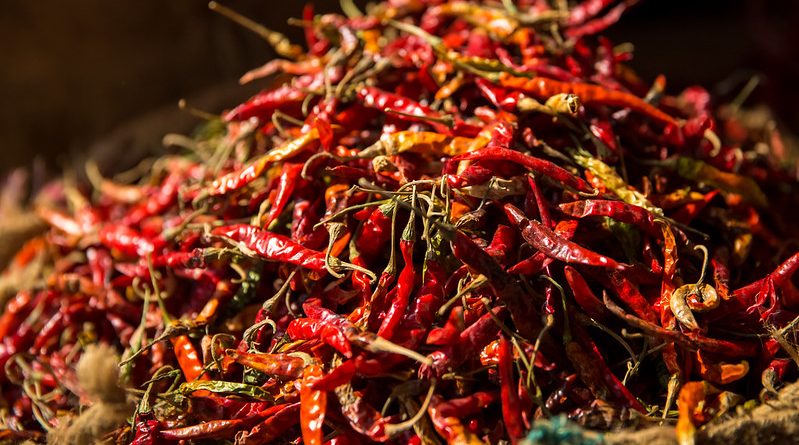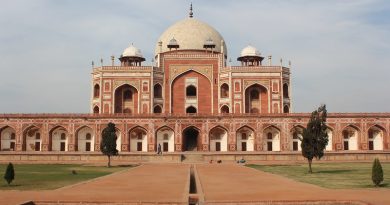Khari Baoli Spice Market in Chandni Chowk
There is a warren of alleys in the southwestern part of Chandni Chowk that holds a very special adventure for the curious visitor. It is the wholesale spice and wholesale grocery market of Delhi, and is a journey back in time as much as it is a journey into the secret of India’s cuisine – the spices.
Study Guide: The Journey of Spices
Lane after lane, traders sit under portraits of their ancestors, counting money, muttering away about the quality of their products, porters carrying ridiculously big bags from here to there. The market, adjacent to Fatehpuri Masjid, has been operating since the 17th century and is in fact Asia’s largest spice market, which caters for all of North India. It is named after the original saline water stepwell once standing here for the sake of bathing and animal care. It was constructed along with a fortified gateway on its western end popularly known as Lahori Gate, one of the 14 gates of the fortified city of Delhi, and its road through it led to the city of Lahore now in Pakistan.
Although none of the original structures remain, the market has retained its ancient feel – a place beyond time, where the 9th and 10th generation has been passed the baton by their forefathers. On offer are the largest selections of freshly ground spices one could possibly imagine, dried herbs and dried fruit, and a heavenly mix of seasonal fresh fruit.
Indian spices are the heartbeat of the Indian kitchen. There is a huge variety of them grown across the entire Indian subcontinent, with some having been important from elsewhere but many native to the subtropical climate typical for central and southern India especially. Curry is in fact not a particular dish, but used by westerners to refer to an Indian dish with a blend of spices, either as a gravy or as a dry dish. Some of the best-known Indian spices are cardamom, cumin, fennel, Indian bay leave, anis seed, and turmeric. They don’t just give the food the amazing colour but also its fantastic taste. The Indian kitchen, which is in essence a vegetarian kitchen, is hugely popular around the world, and its revered for its diversity and natural freshness. Through the international spice trade, the Indian spices have influenced pretty much all of the European countries as well as other Asian cuisines.
Spices are used in a variety of forms – whole, chopped, ground, roasted, sautéed, fried and as a topping. They blend food to extract the nutrients and bind them in a palatable form. Some spices are added at the end as a flavouring and are typically heated in a pan with ghee before being added, strong spices first, lighter spices are added last. And then they either make your mouth water… or burn…




